Sep
10
How to disable VLC Media player system tray popup (updated for v 2.x)
Filed Under Fix, Howto, Linux, Windows | 58 Comments
Sometimes is annoying having all this popups when VLC is minimized and track changes.
Here is how to disable them (for version 1.x):
Go to Tools-> Preferences -> All -> Interfaces -> Main Interfaces -> Qt
and uncheck Notify on track change.
And since interface changed in new version (For version 2.x)
Go to Tools-> Preferences -> Interface -> Show media change popup
and change to Never
Here is a screenshot for reference:
Added by request(Trevor):
If you want to remove systray icon just above there is the setting “Show Systray Icon”. Uncheck it to remove icon from systray.
Aug
8
Acrobat and arrow keys (fix)
Filed Under Fix, Howto | Leave a Comment
For long time I was frustrated form inability to use arrow keys in Adobe acrobat reader to move up and down the page.
Instead of that the cursor was moving in the text.
Finally I realized that this is used to select text. And surprisingly enough I was in Select mode.
Right click and change to Hand tool and I now have the desired behavior.
Hope this will help someone.
Apr
12
Unit conversion in Spreadseets
Filed Under Howto, Linux, Windows | Leave a Comment
Recently I had to create a table to convert from lb to kg.
The way I did it was to start spreadsheet program – Excell or OpenOffice.org and fill up the conversion formula and desired data range.
1. In a cell fill the conversion in my case 1 lb = 0.453592 kg I used cell B1
2. Fill up a column with desired data
3. in next column type the formula =A3*$B$1
4. Copy the formula to other rows
5. Done
This method could be used for other conversions just by changeng the value in B1
Jan
8
Another way of saving ink
Filed Under Howto, Linux, Windows | Leave a Comment
There are different ways of saving ink/toner, but SPRANQ has different approach – punching holes in the font.
Here is a sample:
The good news is that it is available under GPL.
Take it from here.
Dec
24
Print envelope with OpenOffice.org
Filed Under Howto, Linux, Windows | Leave a Comment
In the era of e-mail and internet less and less people use regular mail, but sometimes you need to send a letter to someone.
Typing the address can be annoying and sometimes unclear so let’s put your computer to work.
To print your and recipient address on an envelope you can use manual formatting on a page, but if you follow the instructions here the process will be more automated.
So what we need:
- Printer – you want to print with something
- Envelopes – and something to print on
- OpenOffice.org (OO) – and some tools
Note: If you have MS Office you can use it too. See at the end…
1. Start OO and create empty document in writer
2. Go to Insert -> Envelope
You will see similar window:
Add your address (if it is not already filled in) and Recipient address.
3. Select envelope format
Next click on Format tab
Choose your envelope format and addresses positioning
4. Setup your printer
It is not done you need also to setup your printer. Click on Printer tab:
Select correct envelope orientation and setup your printer to use envelope as paper and correct paper source (usually manual feed).
6. Ready to Print?!
When you are ready click on New Doc.:
Here you can add your logo and preview how the envelope will look like.
When you are sure it is OK just print it.
First few times you will be on trial and error, until you correctly print, but after will be straightforward.
For Microsoft Office users:
If you have Office it is not obligatory to download ind install OpenOffice.org.
The procedure is similar, but on step 2 you go (at least in MS Office 2003) to Tools -> Letters and Mailings -> Envelopes and Mailings…
Dec
17
GPU acceleration in Acrobat – Take 2
Filed Under Howto, Windows | Leave a Comment
Or the benefits of upgrade…
As already mentioned in my previous post Adobe added 2D acceleration in Acrobat reader in version 8. Unfortunately for me that feature was not available for the card in my laptop.
Today I’ve decided to upgrade to v 9 and for my surprise 2d acceleration was available and turned on by default.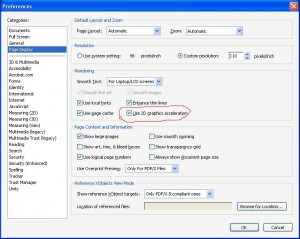
Nov
29
How to send e-mail to SMS
Filed Under fun, Howto | 23 Comments
Even more and more people have Mobile phones capable to use e-mail still majority of mobile users have ordinary mobile phone.
After long search on internet I found a list explaining how to send SMS from e-mail.
Do not forget that SMS is limited to 160 characters so be short.
Here is the list:
Austria
MaxMobil xxxxxxxxxx@max.mail.at
One Connect xxxxxxxxx@onemail.at
T-Mobile xxxxxxxxx@sms.t-mobile.at
Australia
Blue Sky Frog xxxxxxxxx@blueskyfrog.com
Optus Mobile xxxxxxxxx@optusmobile.com.au
Belgium
Mobistar xxxxxxxxx@mobistar.be
Bermuda
Mobility xxxxxxxxx@ml.bm
Brazil
Claro (Brasil) xxxxxxx@clarotorpedo.com.br
Nextel xxxxxxxxx@nextel.com.br
Canada
Bell Mobility xxxxxxxxx@txt.bell.ca
Bell Mobility xxxxxxxxx@txt.bellmobility.ca
Fido xxxxxxxxx@fido.ca
Microcell xxxxxxxxx@fido.ca
Manitoba Telecom Systems xxxxxxxxx@text.mtsmobility.com
NBTel xxxxxxxxx@wirefree.informe.ca
PageMart xxxxxxxxx@pmcl.net
PageNet xxxxxxxxx@pagegate.pagenet.ca
Rogers xxxxxxxxx@pcs.rogers.com
Telus xxxxxxxxx@msg.telus.com
Chile
Bell South xxxxxxxxx@bellsouth.cl
Czech Republic
Eurotel +ccaaxxxxxxx@sms.eurotel.cz
Oskar xxxxxxxxx@mujoskar.cz
Denmark
Sonofon xxxxxxxx@note.sonofon.dk
Tele Danmark Mobil xxxxxxxx@sms.tdk.dk
Telia Denmark xxxxxxxxx@gsm1800.telia.dk
Estonia
EMT xxxxxxxxx@sms.emt.ee
France
SFR xxxxxxxxx@sfr.fr
Germany
T-Mobile +49xxxxxxx@t-d1-sms.de
Mannesmann Mobilefunk xxxxxxx@d2-message.de
E-Plus 0177xxxxxxx.sms@eplus.de
Hungary
PGSM 3620xxxxxxx@sms.pgsm.hu
India
BPL mobile xxxxxxxxx@bplmobile.com
Chennai RPG Cellular xxxxxxxxx@rpgmail.net
Chennai Skycell / Airtel xxxxxxxxx@airtelchennai.com
Delhi Aritel xxxxxxxxx@airtelmail.com
Delhi Hutch xxxxxxxxx@delhi.hutch.co.in
Idea Cellular xxxxxxxxx@ideacellular.net
Orange xxxxxxxxx@orangemail.co.in
Ireland
Meteor xxxxxxxxx@sms.mymeteor.ie
Italy
Telecom Italia Mobile 33xxxxxxxx@posta.tim.it
Vodafone Omnitel 34xxxxxxxx@vizzavi.it
Vodafone xxxxxxxxx@sms.vodafone.it
Japan
Vodafone Japan xxxxxxxxx@c.vodafone.ne.jp
Vodafone Japan xxxxxxxxx@h.vodafone.ne.jp
Vodafone Japan xxxxxxxxx@t.vodafone.ne.jp
Latvia
Kyivstar xxxxxxxxx@smsmail.lmt.lv
LMT 9xxxxxx@smsmail.lmt.lv
Tele2 xxxxxxxxx@sms.tele2.lv
Lebanon
Cellis / LibanCell 9613xxxxxx@ens.jinny.com.lb
Luxembourg
P&T Luxembourg xxxxxxxxx@sms.luxgsm.lu
Malaysia
Celcom 019xxxxxxx@sms.celcom.com.my
Mexico
Nextel xxxxxxxxx@mmsnextel.com.mx
The Netherlands
Dutchtone / Orange-NL xxxxxxxxx@sms.orange.nl
Norway
Netcom xxxxxxxxx@sms.netcom.no
Telenor xxxxxxxxx@mobilpost.no
Panama
Cable and Wireless xxxxxxxxx@cwmovil.com
Poland
Plus GSM +4860xxxxxxx@text.plusgsm.pl
Portugal
Telcel 91xxxxxxx@sms.telecel.pt
Optimus 93xxxxxxx@sms.optimus.pt
TMN 96xxxxxxx@mail.tmn.pt
Russia
BeeLine GSM xxxxxxxxx@sms.beemail.ru
MTS 7xxxxxxxxxx@sms.mts.ru
Personal Communication sms@pcom.ru (number in subject line)
Primtel xxxxxxxxx@sms.primtel.ru
SCS-900 xxxxxxxxx@scs-900.ru
Uraltel xxxxxxxxx@sms.uraltel.ru
Vessotel xxxxxxxxx@pager.irkutsk.ru
Serbia and Montenegro (Former Yugoslavia)
Mobtel Srbija xxxxxxxxx@mobtel.co.yu
Singapore
MiWorld xxxxxxxxx@m1.com.sg
Mobileone xxxxxxxxx@m1.com.sg
Slovenia
Mobitel xxxxxx@linux.mobitel.si
Si Mobil xxxxxx@simobil.net
Spain
Movistar xxxxxxxxx@correo.movistar.net
Vodafone xxxxxxxxx@vodafone.es
Sweden
Comviq GSM 467xxxxxxxx@sms.comviq.se
Europolitan 4670xxxxxxx@europolitan.se
Switzerland
Sunrise Mobile xxxxxxxxx@freesurf.ch
Sunrise Mobile xxxxxxxxx@mysunrise.ch
Swisscom xxxxxxxxx@bluewin.ch
Tanzania
Mobitel xxxxxxxxx@sms.co.tz
Ukraine
Golden Telecom xxxxxxxxx@sms.goldentele.com
Kyivstar xxxxxxxxxx@2sms.kyivstar.net
UMC xxxxxxxxx@sms.umc.com.ua
United Kingdom
Orange 0973xxxxxx@omail.net
Orange xxxxxxxxx@orange.net
O2 name@o2.co.uk
O2 (M-mail) xxxxxxxxx@mmail.co.uk
T-Mobile UK xxxxxxxxx@t-mobile.uk.net
Vodafone UK xxxxxxxxx@vodafone.net
United States
Alltel xxxxxxxx @message.alltel.com
AT&T (formerly Cingular) xxxxxxxx@txt.att.net; xxxxxxxxx@mms.att.net (MMS); xxxxxxxx@cingularme.com
Boost Mobile xxxxxxxx@myboostmobile.com
Nextel (now Sprint Nextel) xxxxxxxx@messaging.nextel.com
Sprint PCS (now Sprint Nextel) xxxxxxxx@messaging.sprintpcs.com; xxxxxxxx@pm.sprint.com (MMS)
T-Mobile xxxxxxxx@tmomail.net
US Cellular xxxxxxxx@email.uscc.net (SMS); xxxxxxxxx@mms.uscc.net (MMS)
Verizon xxxxxxxxx@vtext.com; xxxxxxxxxx@vzwpix.com (MMS)
Virgin Mobile USA xxxxxxxxxx@vmobl.com
Any updates and notes are welcome in the comments.
Remember, before you start “spamming” your friends ask them if they want to receive e-mail to SMS/MMS. Most of the plans do not include unlimited SMS and the user usually pays incoming SMS-es.
And for the “victims” if you do not want to receive e-mail to SMS ask your provider to stop that service as I did with my cell phone after a “friend” started to use e-mail to SMS (even it was not an emergency) instead simply sending me an e-mail.
Nov
27
How to repair Linux(CentOS) software RAID
Filed Under Fix, Howto, news | Leave a Comment
Sooner or later hard drives fail…
That’s why we use RAID arrays. The best solution is to use hardware RAID – one assisted with specialized processor on the board. In that category I do not include cheap (called Fake RAID) solutions integrated on the motherboard.
But unfortunately sometimes real RAID controllers are too pricey – here on help comes software RAID.
The good news is that it is included in most of the recent OS. Linux does not make an exception and the software included is really well optimized and even recommended to achieve better performance over Fake RAID.
…
Now in case of failure we are protected, but RAID 1 and 5 will protect the data in case of one drive failure so it is better to replace the failed drive as soon as possible, but on other side you do not want to stop the machine right now.
NOTE: If you have IDE HDD do not use following procedure. IDE drives are NOT HOTSWAPPABLE and removing it may cause MORE DAMAGE.
This is valid also for ordinary s-ATA and SCSI drives.
In case that you have hotswappable drive SCA or similar you can replace the drive when the machine is working.
If you are not sure check the documentation that come with your hardware.
And now after all this precautions let’s start:
Determine the failed drive
To check what array and what drive have problem simply type:
cat /proc/mdstat
Here is sample output:
md2 : active raid5 sdd2[4](F) sda2[0] sdc1[2] sdb2[1]106221312 blocks level 5, 256k chunk, algorithm 2 [4/3] [UUU_]In this case the problem is sdd.
Check drive size and type
For the size type:
fdisk -lAnd look for sdd in the output.
To check exact drive model type:
dmesg|lessand again look just before SCSI device sdd:
Next step is to obtain replacement drive
(ideally the same model)
Dump the partition table from the drive, if it is still readable:
sfdisk -d /dev/sdd > partitions.sddRemove the drive to replace from the array:
mdadm /dev/md2 -r /dev/sdd2Look up the Host, Channel, ID and Lun of the drive to replace,
by looking in
cat /proc/scsi/scsiRemove the drive from the bus
echo "scsi remove-single-device 1 0 3 0" > /proc/scsi/scsiVerify that the drive has been correctly removed
by looking in
cat /proc/scsi/scsiPhysically replace the drive
Unplug the drive from your SCA bay, and insert a new drive
Add the new drive to the bus:echo "scsi add-single-device 1 0 3 0" > /proc/scsi/scsi(this should spin up the drive as well)
Recreate the layout
Re-partition the drive using the previously dumped partition table:
sfdisk /dev/sdd < partitions.sddIf failed drive was unreadable here you need to create new partitions
Add the drive to your array
mdadm /dev/md2 -a /dev/sdd2You can check if the operation was successful by issuing
cat /proc/mdstat Inspired with modifications fromJun
26
Clean your ThinkPad from beginning
Filed Under Fix, Howto, Windows | Leave a Comment
Lenovo is shipping new ThinkPads preinstalled with huge amount of software you do not really need.
This slows the boot process to the levels new computer should not be.
Here is the list of software I removed from T61:
- All MS Office related (trial) – Later I’ll install the products we have license for
- SQL server (yes it is installed) related
- Windows Live toolbar
- Norton Internet Security – Will replace it with Norton Endpoint Protection
Other option is to reinstall the system from scratch.
Excellent tutorial on how to do it
Tip: Do not connect the system to internet until you are ready to. It starts right away to download and install windows updates and will slow down the machine.
May
23
Recently after installing Office 2007 using default installation options I saw unusual entry in my task manager processes.
GrooveMonitor.exe
It took almost 8M of my memory so I started search on what it is.
Quickly I discovered that it is part of MS Office 2007 and is used to share files and work on projects with other Microsoft Office Groove users.
It sounds nice, but I do not use it at all so I start searshing the ways to remove it from the system.
After looking to standard kill process and erase the startup entry process I tried add/remove program–>Office 2007 –> change and for my surprise I saw Groove entry.
So I unchecked it and that removed it. Strange, but it worked.
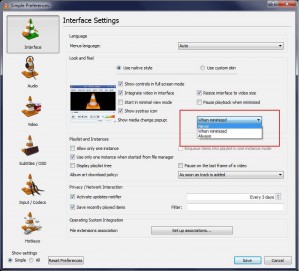


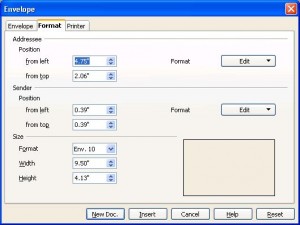
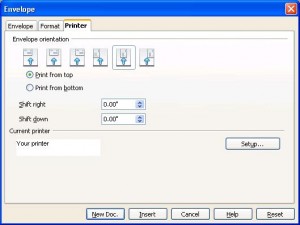
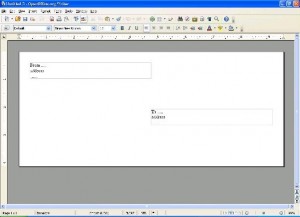
You must be logged in to post a comment.